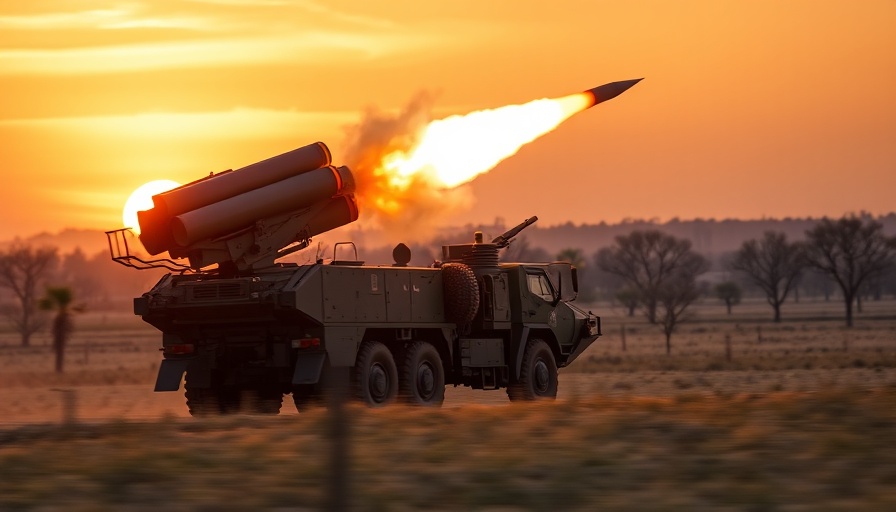
Ukraine’s Dependence on HIMARS: A Turning Point in Warfare
The arrival of the U.S.-supplied High-Mobility Artillery Rocket System (HIMARS) in June 2022 marked a significant shift in Ukraine's capacity to engage Russian forces. This precision artillery system, which can strike targets up to 57 miles away, has been pivotal in Ukraine's defense strategy. Ukrainian President Volodymyr Zelensky described HIMARS as "synonymous with justice," emphasizing its role in inflicting painful losses on the Russian military.
Current Crisis: Strained Rocket Supplies
However, the momentum gained by these powerful systems is at risk due to a recent freeze on U.S. military aid. Following a contentious press conference where President Trump and Vice President Vance criticized Zelensky, further support to Ukraine has been suspended. As supplies dwindle, the potential depletion of HIMARS rockets raises urgent concerns about the Ukrainian military's operational capabilities.
Reports indicate that the U.S. has provided around 7,000 HIMARS-compatible M30/31 rockets, but these may not be sufficient given that the weapon systems can fire a high volume of rockets daily. To maintain firepower, Ukraine must either find alternative sources for these munitions or drastically reduce their usage, opting for precision strikes instead of mass firing.
Exploring Alternative Sources for Ukraine’s HIMARS
As Ukraine faces these challenges, options for resupplying HIMARS rockets are being explored. European allies such as the U.K., Germany, and Italy have provided some military equipment, including M270 launchers capable of firing the same rockets as HIMARS. Yet European stocks of these munitions were never as substantial as those of the U.S. With these nations’ help, Ukraine may sustain its HIMARS operations in limited capacities, although frequency of use will likely decline.
Interestingly, Turkey's defense industry is reportedly working on HIMARS-compatible rockets, but whether these will enter production and supply remains uncertain in light of the ongoing geopolitical tensions. This ambivalence underscores the volatility of defense supply chains during wartime, as international partnerships evolve based on current political climates.
The Future of Ukraine's Military Strategy
Experts suggest that Ukraine must adapt rapidly under these new constraints. As dependency on U.S. aid diminishes, the focus will shift toward leveraging domestic production capabilities and exploring partnerships with countries willing to provide military support. This could lead not only to innovations within Ukraine's defense sector but also to a reevaluation of how alliances are structured amidst ongoing global conflicts.
The importance of sustained HIMARS operations cannot be overstated. As the situation evolves, Ukraine will need to balance its strategic objectives with the practical realities of resource acquisition to maintain its fighting capabilities against Russian aggression.
 Add Row
Add Row  Add
Add 




Write A Comment